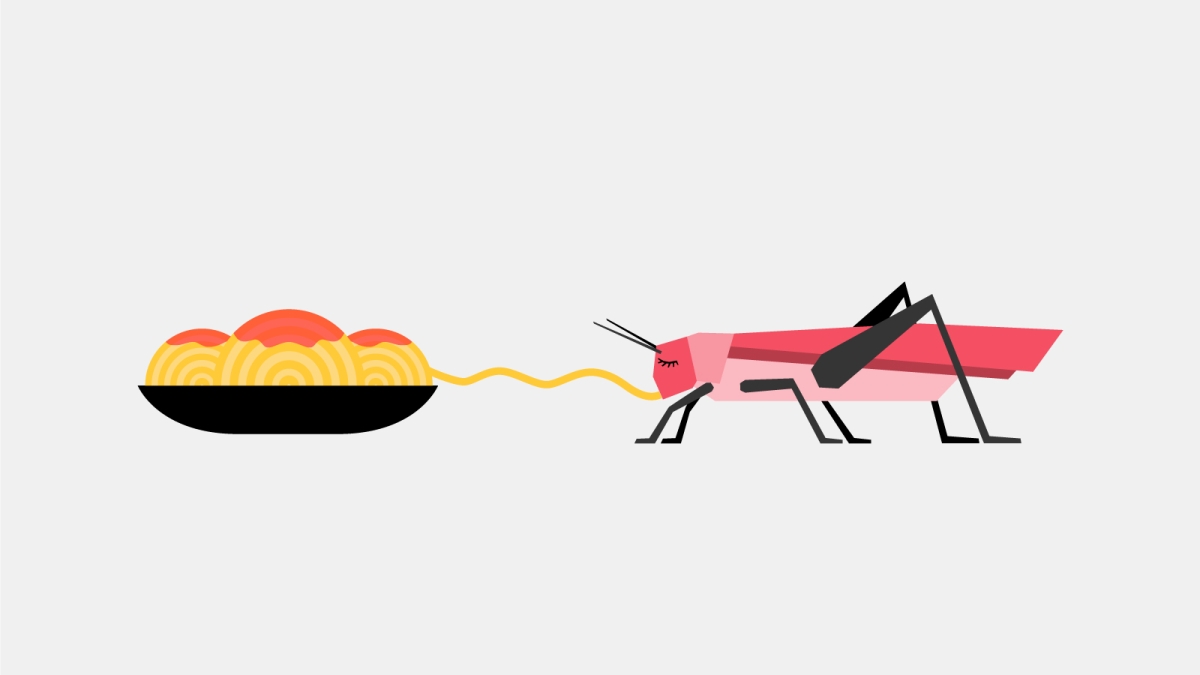Like marathon runners, locusts carbo-load before a long journey
According to a new study from ASU's Global Locust Initiative scientists, they do it for the same reason humans do

It’s the night before the marathon. You’ve been training for months and now it’s go time. What’s for dinner?
Huge bowl of pasta, probably. Or rice with veggies. Or a big baked potato (without the skin).
High-carbohydrate foods fill up your body’s fuel tanks with easily burnable energy, putting the best possible face on your performance.
But however far you’re going to run, it’s probably nowhere near 350 kilometers, which is how far migrating locusts will fly in a single night.
And before their epic journeys, locusts carbo-load too, according to a study published this month by an Arizona State University scientist.
Marion Le Gall, an assistant research professor in the Global Locust Initiative in the School of Sustainability, conducted a locust field study in 2017 in Senegal.
Her findings showed that Senegalese locusts did better in overgrazed pastures than in a normal pasture. Co-author Arianne Cease tied this to the nutritional content of plants: Land that was overgrazed contained less nitrogen and plants were more sugar-based. That was good for the locusts.
“We were wondering if there was a global pattern,” Le Gall said.
They fertilized millet, a subsistence crop the rural Senegalese survive on. They did three treatments: a control plot, with no fertilizer; and two fertilized plots. They measured the nitrogen content.
“We got what we were hoping for,” Le Gall said.
Fertilized plots had more protein (the plant used the nitrogen from the fertilizer to make more protein) and less sugar than the control plot.
When the researchers gave locusts a choice of millet that was fertilized and millet that was not, the females preferred the unfertilized food.
“That’s surprising because most herbivorous insects, you give them a plant that has more protein, they’re going to want that,” Le Gall said.
When the millet is fertilized, the insects laid the same amount of eggs. But the eggs the female laid were smaller. Female survival was also better on the control plots than on the fertilized plots.
“We already knew from lab results, and from Arianne’s work with the Senegalese locust, that some locust species prefer more sugar (carbohydrates) in their food, but this was the first time that we demonstrated an effect on adult survival and reproduction,” Le Gall said.
What the researchers think is happening is locusts prefer food with more sugar to fuel migration, because locusts are grasshoppers that fly long distances. When migrating, they can travel up to 350 kilometers in one night. But insects are not very efficient flyers, and for them, it’s very energy-consuming to fly long distances.
“If you’re going to run a marathon, you don’t eat a steak, you carbo-load,” Le Gall said. “We know that locusts use their fat reserves to fuel long-distance flights. The best way to get fat is to eat a lot of sugar. We think that’s why we found these results.”
Le Gall hypothesizes that this pattern will apply broadly to species that have extensive carbohydrate needs, such as long‐distance migrators. Because many ecological studies focus primarily on nitrogen or protein and fail to consider carbohydrates, this study has important implications for how ecologists consider nutrient limitation of primary consumers in ecosystems globally.
The study published Aug. 2 in the Journal of Animal Ecology.
Top illustration by Alex Cabrera, Media Relations and Strategic Communications
More Science and technology

The science behind chronic stress
Stress comes in many shapes and sizes. There’s the everyday stress of preparing for a final exam or being stuck in traffic. And the more significant stress of losing a friend, family member,…

ASU planetary scientist to be inducted into the National Academy of Sciences
The National Academy of Sciences is inducting School of Earth and Space Exploration Director Meenakshi Wadhwa into the 2023 class of new members for her pioneering work in planetary sciences and…

Unlocking the potential of AI for homeland security
“Can we do what we're doing now cheaper, more efficiently, more effectively?” Adam Cox, director in the Office of Strategy and Policy at the Department of Homeland Security Science and Technology…